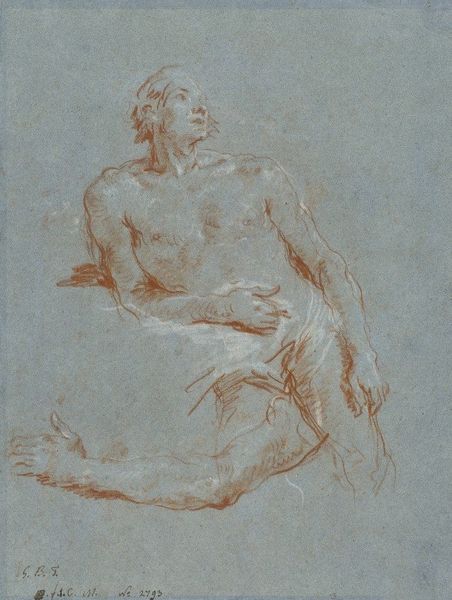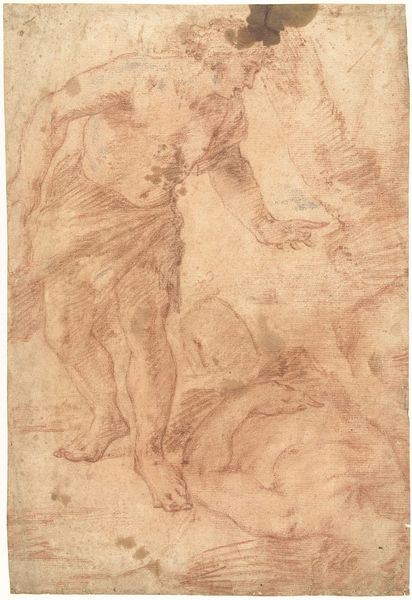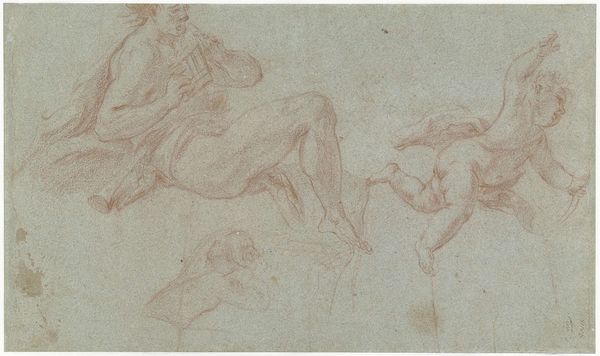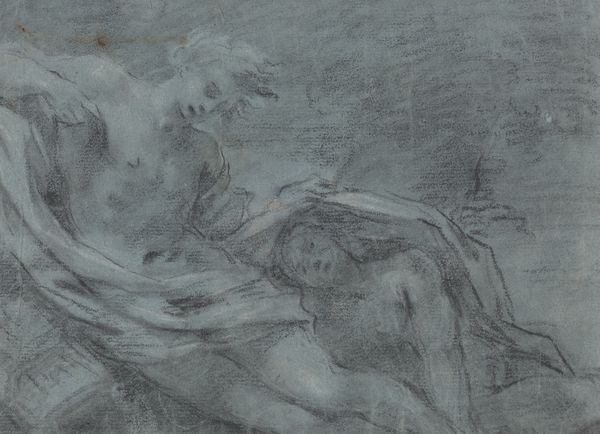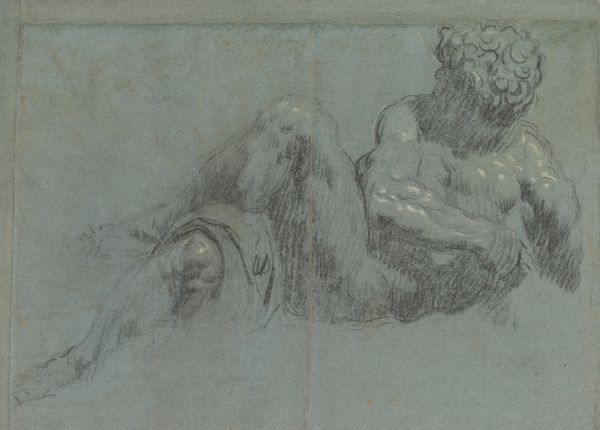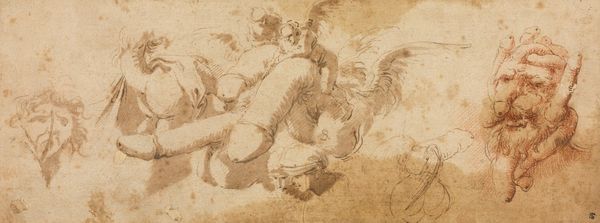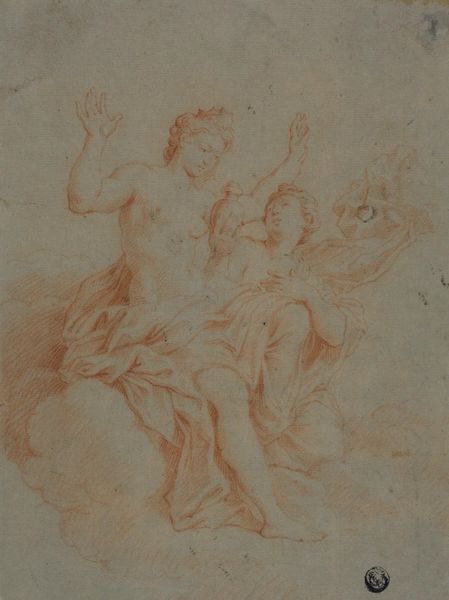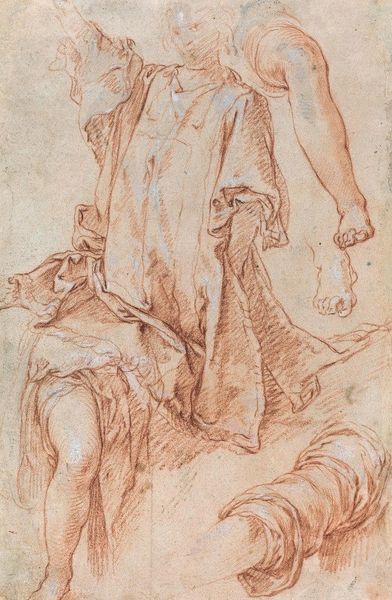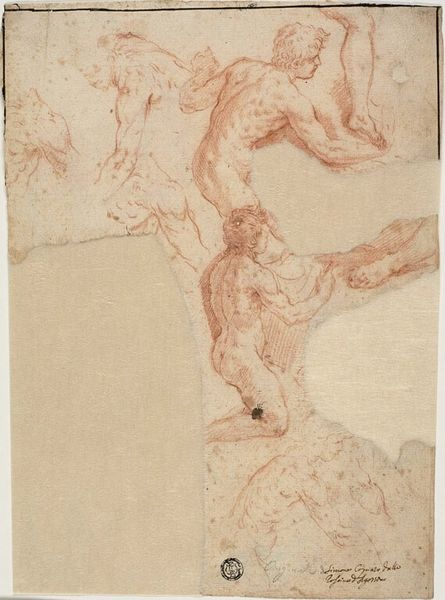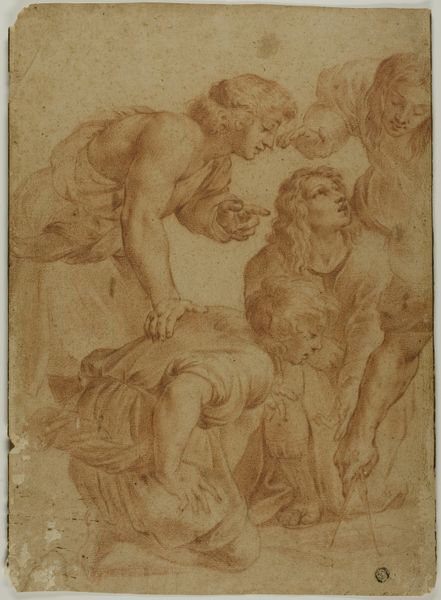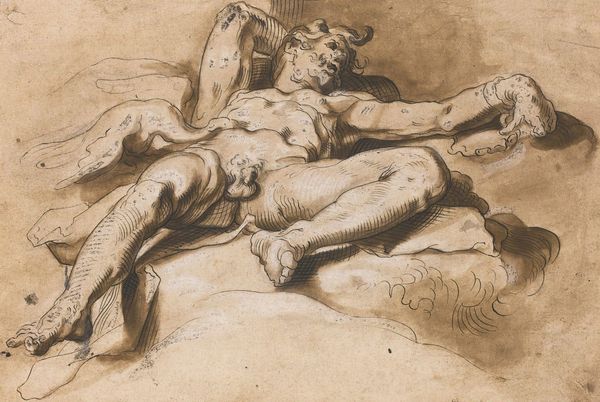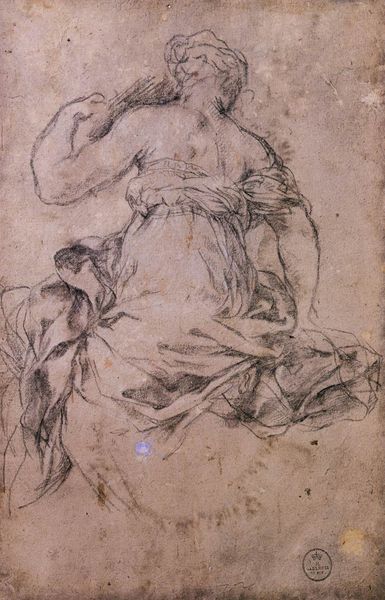
drawing, paper, charcoal
#
drawing
#
baroque
#
charcoal drawing
#
paper
#
11_renaissance
#
portrait drawing
#
charcoal
Copyright: Public Domain: Artvee
Curator: Immediately, the ruddy, sanguine strokes evoke warmth, even tenderness, in this portrait. Editor: Today, we're examining Guercino's "Seated Old Man with Right Arm Upraised," created in 1621 using charcoal on paper. It offers a fascinating window into Baroque era figure studies. Curator: I'm drawn to consider its subject. We see an elderly man, caught in a moment that reads as both resignation and subtle defiance. The upraised arm speaks to a sense of interrupted action, perhaps a gesture frozen by the artist's hand. Is he meant to symbolize age confronting power? Editor: You pinpoint well that duality, that precarious balance Guercino creates. But have you observed the strategic use of chiaroscuro? It's less about social allegory here, more about how the light models form, guiding our sight throughout, while the loose hatching captures movement. The formal dialogue is quite sophisticated for a quick sketch. Curator: Yet, his aged, perhaps wearied physique also invites a reading of societal displacement—of being rendered invisible by the march of time. Remember the position of artists within patronage networks then; the act of depicting the overlooked carried subtle rebellious charge. It echoes representations of marginal figures that permeated later socialist realist art, challenging dominant narratives. Editor: I recognize your point; but might it not simply be a preparatory study? I argue the expressive qualities and virtuoso execution alone secure its artistic merit. Surely not all art must perform such didactic roles to claim significance. Curator: That's the art-historical tightrope walk, isn't it? While isolating aesthetics offers analytical control, ignoring the rich potential for sociocultural interpretations often misses the deeper resonations art holds for viewers and within society. The interplay creates a valuable dialectic—it asks to reconsider those binaries and expectations. Editor: True; the power ultimately lies in holding the work open for precisely these contesting analyses, isn’t it? Curator: Precisely. We uncover our assumptions, layer our experience and let each drawing show, or at least imply, a different perspective, making these historical artifacts continuously current.
Comments
No comments
Be the first to comment and join the conversation on the ultimate creative platform.

